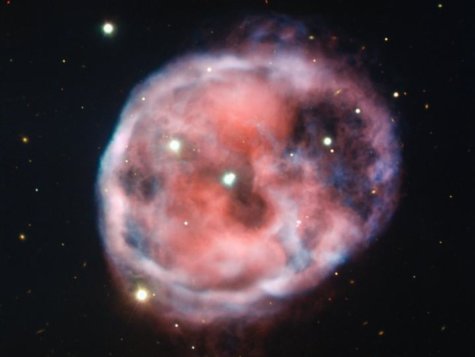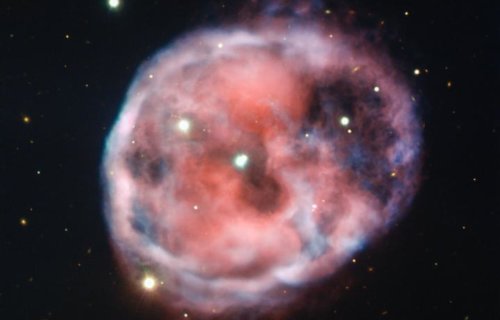ANTOFAGASTA, Chile — Just in time for Halloween, astronomers in Chile have captured a new image of an eerie nebula shaped like a skull. Researchers say its spooky facial features aren’t the only thing making this interstellar dust cloud special; it’s also home to a triple star system.
The European Southern Observatory took the new photo of the famous Skull Nebula using its Very Large Telescope (VLT) in Chile. Researchers say a long string of out-of-this-world events took place to form this nebula.
Skull Nebula is a fragile remnant of a long dead star sitting about 1,600 light-years from Earth. The nebula floats in space inside the southern constellation of Cetus (The Whale). Also known as NGC 246, Skull Nebula is the first known dust cloud to have two closely bound stars with a third star orbiting them.
The eerie sight formed after a star, much like our sun, expelled its outer layers into space. This left behind just its aging core (a white dwarf) as one of two stars that can be seen in the center of NGC 246.
Skull Nebula: An old friend with new secrets

ESO says in a statement that astronomers have known about Skull Nebula for centuries, but only discovered its third star in 2014. The third star, which can’t be seen in the new photo, is a red dwarf which sits near by the white dwarf. This dim star is about 500 times farther away from the white dwarf than Earth is from the Sun.
Astronomers add the dwarfs orbit each other as another star travels around them. All together, the trio make up the first ever triple star system found inside a planetary nebula.
The VLT used an instrument called the FORS 2 (FOcal Reducer and low dispersion Spectrograph 2) to capture light in narrow wavelengths coming from the nebula. Those narrow ranges are associated with hydrogen and oxygen. In the case of Skull Nebula, patches of red indicate which regions are rich or poor in hydrogen. Those that are blue represent the oxygen floating in space.
